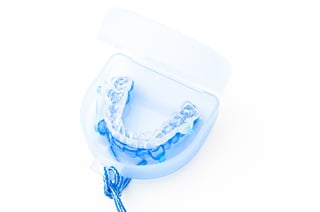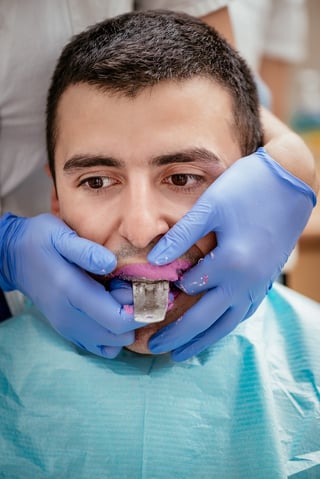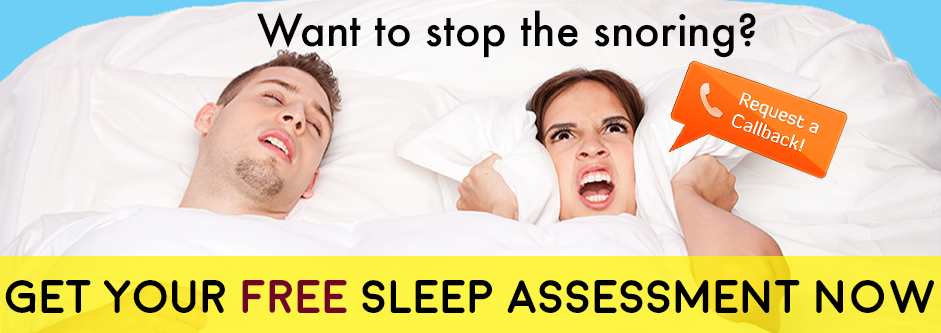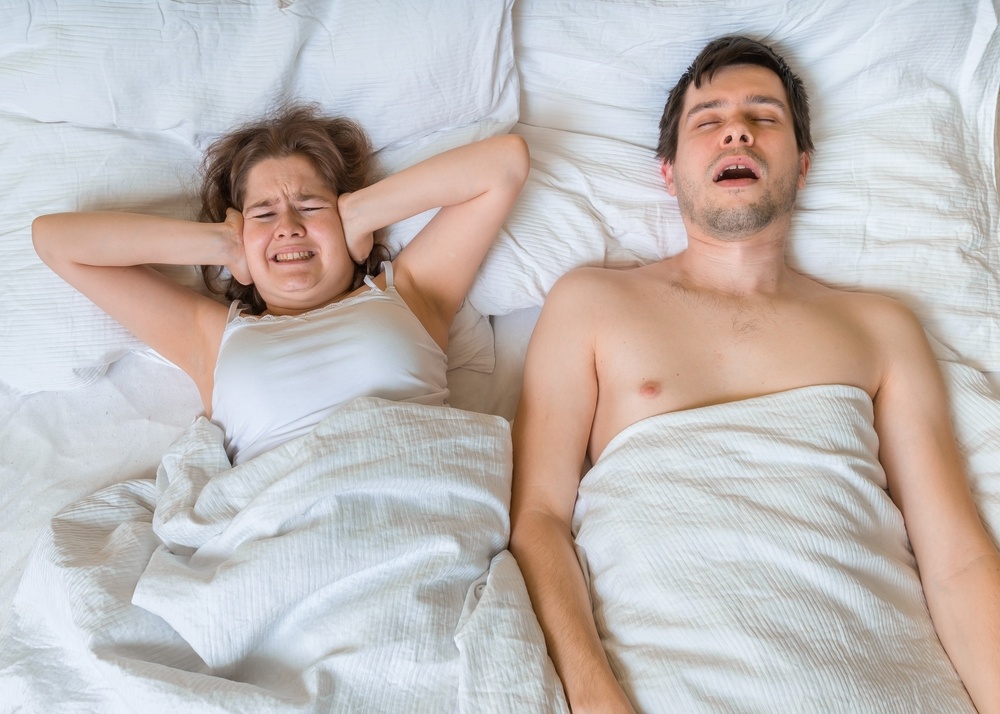
If you snore or have obstructive sleep apnea (OSA), your doctor may recommend that you try an oral appliance — commonly called an anti-snoring mouthpiece — to keep your airway open when you sleep. Your next question (after “How does it work?”) is probably: “Where do I get one?” Answer: a sleep medicine dentist.
What Is a Sleep Medicine Dentist / Dental Sleep Medicine?
A sleep medicine dentist is a regular dentist with an additional area of expertise in using oral devices to help treat snoring, apnea, and other forms of sleep-disordered breathing. He or she can collaborate with your sleep physician to create an oral appliance — usually a sleep apnea mouthpiece — that alleviates symptoms like airway blockages and snoring.
According to The American Academy of Dental Sleep Medicine (AADSM), over 2,800 dentists worldwide are trained to practice dental sleep medicine.
How An Oral Appliance (Sleep Apnea Mouthpiece) Helps with OSA
For most people who snore or have OSA, “oral appliance” will mean wearing a custom-fitted mouthpiece 
that resembles a sports mouth guard or retainer. Your dentist fits the appliance to your jaw and teeth, then adjusts it to bring your bottom jaw slightly forward. This tiny movement makes more room at the back of the throat, keeping the airway open. The result: no airway obstruction, therefore no sleep apneas (cessations of breathing) or snoring.
The success rate of oral appliances is good and is getting better as the technology improves. Today, over 100 different sleep apnea oral appliances have been approved by the FDA. Both the AADSM and The American Academy of Sleep Medicine (AASM) have given the green light to oral appliance therapy for mild and moderate obstructive sleep apnea.
However, for people with severe OSA, using a CPAP is still the more effective treatment. But for those who can’t tolerate CPAP therapy — for example, if the mask is uncomfortable or the noise keeps you awake — an oral appliance may be a good alternative.
According to studies, anywhere from 30 to 50% of CPAP users dislike treatment and stop using their CPAPs within 1–3 weeks. Quitting CPAP therapy may be tempting, but remember: the health consequences of letting your OSA go completely untreated are too great to risk. If you really can’t stand CPAP, consider a mouthpiece before you throw in the towel on your treatment.
The Advantages of an Oral Appliance/Sleep Apnea Mouthpiece
- Portability. Being so small and lightweight, anti-snoring mouthpieces are excellent for travel. Although you can take your CPAP with you on trips (even on airplanes; even camping, believe it or not!), some people prefer to “travel light” and not lug around an entire CPAP apparatus. They also don’t require batteries or outlets.
- Comfort. Oral appliances are comfortable to wear and nearly as effective as CPAP therapy (for people with mild to moderate OSA).
- Care. Mouthpieces are low-maintenance. They’re easier to care for than CPAP and don’t require regular re-ordering of replacement parts.
- Quiet. Wearing a mouthpiece is silent, in comparison to the blowing air sound generated by a CPAP.
- Stigma-free. Some people prefer to wear mouthpieces because they feel they’re more discreet and carry less of a stigma than a CPAP mask.
- Affordable. Lastly, oral appliances are often more affordable than CPAP (though your insurance may cover both).
Perhaps for all of these reasons, compliance is high with these devices. People who use them tend to continue their therapy.
Getting Fitted for a Sleep Apnea Mouthpiece
 Getting a custom-fitted oral appliance from a sleep medicine dentist is not an overnight process. It may take a few months before you have your device and can start using it. The process usually works like this:
Getting a custom-fitted oral appliance from a sleep medicine dentist is not an overnight process. It may take a few months before you have your device and can start using it. The process usually works like this:
- Your sleep specialist will examine you. If you have snoring without apnea, he or she may write you a prescription for an oral appliance. You can then make an appointment to see a sleep medicine dentist about having an appliance made for you. (Check with your insurance to see if you need a referral.)
- If your sleep specialist diagnoses you with apnea, he or she will recommend a therapy. Most patients with OSA will be advised to use CPAP. If you’re unable to tolerate CPAP or prefer to use an oral appliance, this is the time to discuss your options with your doctor.
- Your first visit to a sleep medicine dentist will be for an examination. The dentist will examine and measure your mouth, tongue, and throat to see if an oral appliance will work for you.
- If you are approved for therapy, your dentist may make a separate appointment for a fitting. He or she will take physical or digital impressions of your mouth to create a model. This is then sent to a lab that will make your appliance.
- When the oral appliance is ready, you’ll visit your dentist again for a fitting, adjustments, and instructions on how to use and care for the device. Your dentist will then schedule any necessary follow-ups. He or she may recommend a sleep study to see if the therapy is working for you.
Summary
A sleep medicine dentist works with your sleep physician to create an oral appliance custom-fitted to your jaw and mouth. This oral appliance (commonly called a “snoring mouthpiece” or “anti-snoring mouthpiece”) helps to keep your airway open, preventing you from snoring and improving the symptoms of mild or moderate sleep apnea.
Used properly, the oral appliances created by sleep medicine dentists have a high compliance rate and are nearly as effective as CPAP therapy.
Many people prefer to use a mouthpiece instead of CPAP or in addition to CPAP. If you’re interested in exploring this possibility, talk to your sleep specialist about oral appliances and ask for a referral to a dental sleep medicine practice in your area.
How to Find a Sleep Medicine Dentist in Kansas
The American Academy of Dental Sleep Medicine maintains a national list of providers. You can visit the AADSM website and provider directory search tool here: http://www.aadsm.org/findadentist.aspx.
Sources:
The American Academy of Dental Sleep Medicine: http://www.aadsm.org
The American Sleep Apnea Association: http://www.sleepapnea.org











Leave a comment